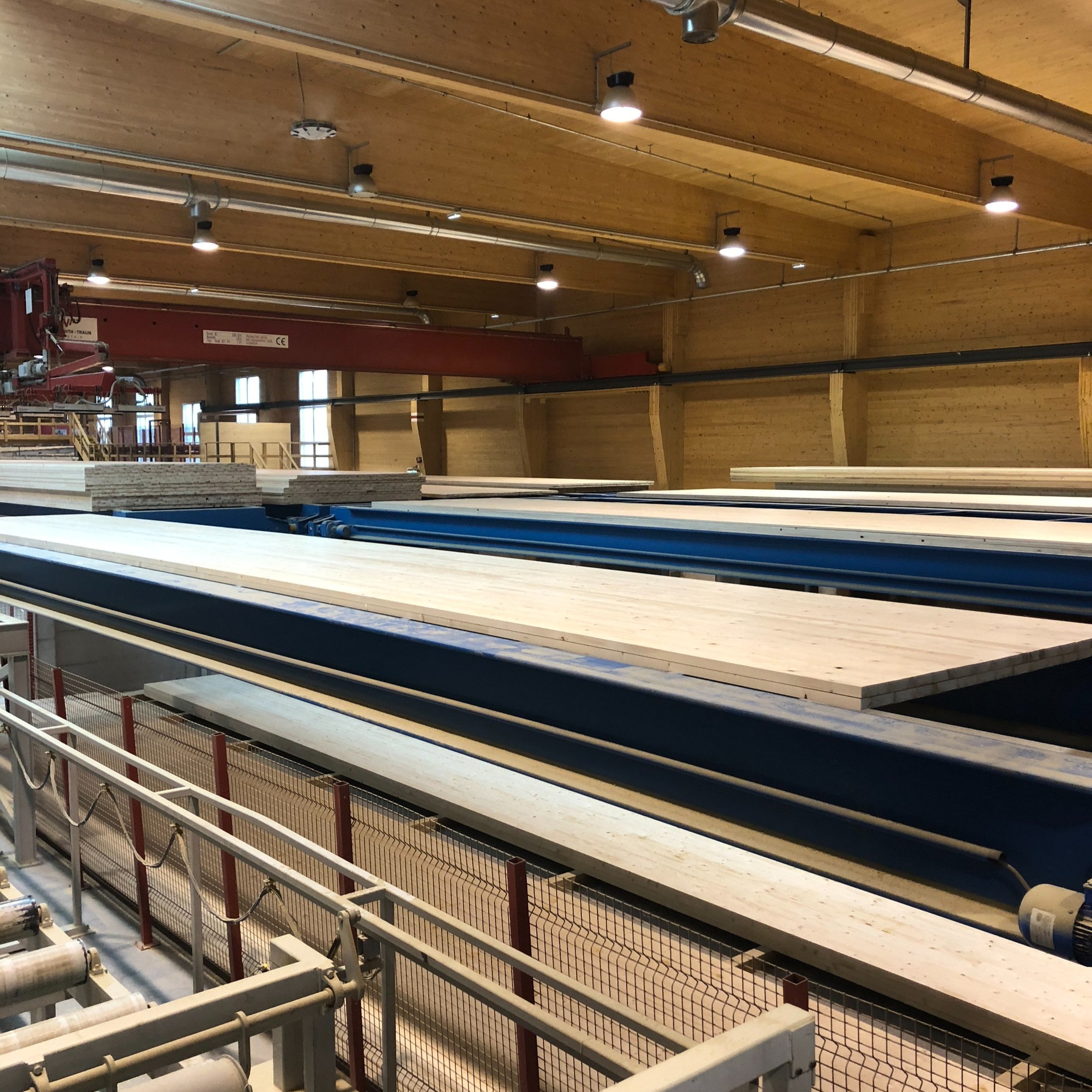CLT: Manufacturing Process
CLT: Manufacturing Process
Unravel the intricacies of the eight-stage process that transforms raw timber into a revolutionary building material. From the careful selection of wood species to the meticulous application of adhesives, each step in the manufacturing journey contributes to the unparalleled strength, stability, and sustainability of CLT.
Process breakdown
Selection of Timber
The first stage involves the selection of lumber. There are numerous different types of wood to pick from however, the most common are pine and spruce both of which have their own unique properties.
Sawing and Drying
After the preferred choice of lumber has been selected, the wood goes through a drying process reducing their moisture content to 10 - 12%.
Grading
The wood is then thoroughly inspected visually and mechanically for any defects based on imperfections, knots and durability. Any pieces of wood that fail to meet these standards are then cut and finger jointed back together.
Trimming and Jointing
Subsequently, any minor adjustments to pieces of timber, primarily resizing them to achieve the desired length for the width and length of the blank panel.
Adhesive Application & Layup
The boards are then bonded with a structural adhesive, typically a moisture-resistant polyurethane or phenol formaldehyde adhesive. They are laid out in alternating perpendicular layers with the adhesive coating in-between. Each slab typically consists of 3 to 7 layers, depending on the desired thickness and strength of the final CLT panel.
Pressing and curing
The CLT panels are now pressed together with a hydraulic press using a high temperature and pressure. The panels are then cured under pressure to allow the adhesive to set properly.
Trimming and finishing
Once fully cured, the CLT master panels are trimmed to the desired dimensions using saws or CNC machines using information in the DfMA model.
Quality Control
The final stage involves thoroughly assessing the quality of the final product. This is done to ensure that the CLT boards successfully meet industry standards and project specifications. This may include testing for strength, dimensional accuracy, and moisture content.









